Discover 35 hidden attractions, cool sights, and unusual things to do in Nice (France). Don't miss out on these must-see attractions: Villa Ephrussi de Rothschild, MAMAC, and Villa Kerylos. Also, be sure to include Palais Lascaris in your itinerary.
Below, you can find the list of the most amazing places you should visit in Nice (Provence-Alpes-Côte d'Azur).
Table of Contents
Villa Ephrussi de Rothschild
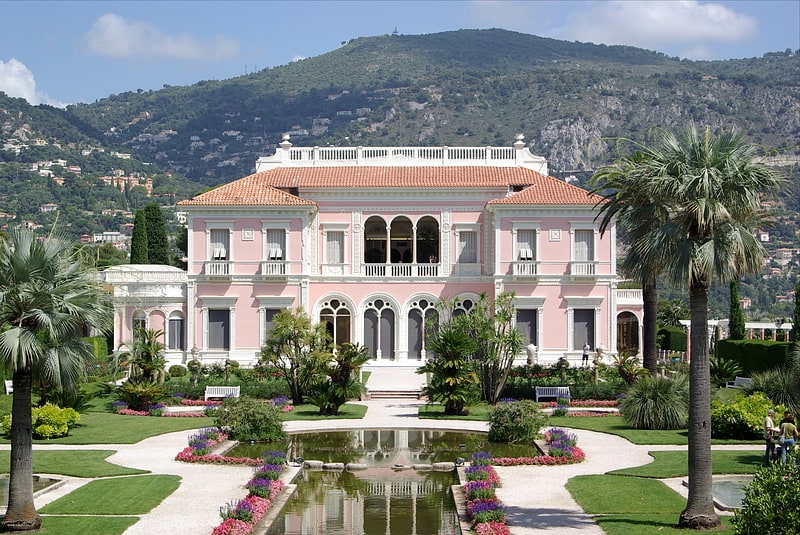
Museum in Saint-Jean-Cap-Ferrat, France. The Villa Ephrussi de Rothschild, also called Villa Île-de-France, is a French seaside villa located at Saint-Jean-Cap-Ferrat on the French Riviera. Designed by the French architect Aaron Messiah, it was built between 1907 and 1912 by Baroness Béatrice de Rothschild.
A member of the Rothschild banking family and the wife of the banker Baron Maurice de Ephrussi, Béatrice de Rothschild built her rose-colored villa on a promontory on the isthmus of Cap Ferrat overlooking the Mediterranean Sea. The Baroness filled the mansion with antique furniture, Old Master paintings, sculptures, objets d'art and assembled an extensive collection of rare porcelain. The gardens are classified by the Ministry of Culture as one of the Remarkable Gardens of France, whilst the villa itself has been classified as a monument historique since 1996.
Upon her death in 1934, the Baroness donated the property and its collections to the Académie des Beaux-Arts division of the Institut de France. It is now open to the public.[1]
Address: 1 Avenue Ephrussi de Rothschild, 06230 Saint-Jean-Cap-Ferrat
MAMAC

Also known as: Musée d'Art moderne et d'Art contemporain de Nice
French and American modern art museum. The Musée d'art moderne et d'art contemporain, also known as MAMAC, is a museum dedicated to modern art and contemporary art. It opened on 21 June 1990, in Nice, France.[2]
Address: Avenue Klein, 06000 Nice (Carabacel)
Villa Kerylos
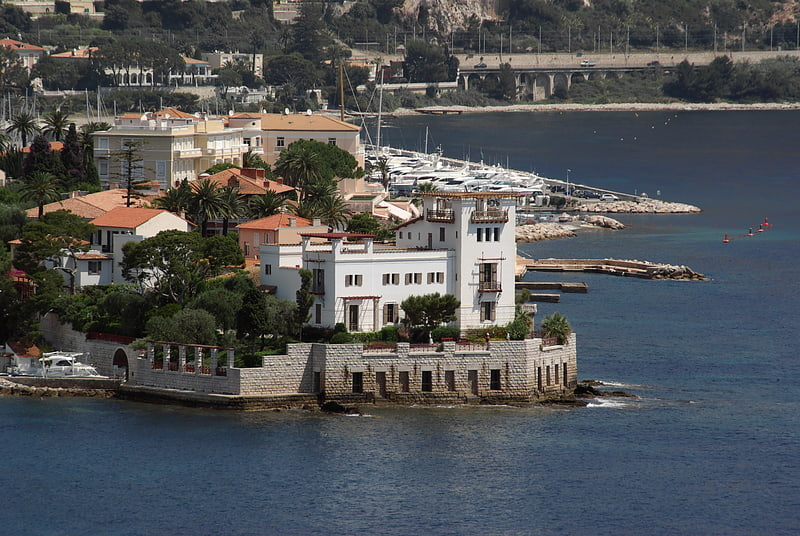
Also known as: Villa Kérylos
Museum in Beaulieu-sur-Mer, France. Villa Kerylos in Beaulieu-sur-Mer, France, is a house in Ancient Greek Revival style built in the early 1900s by French archaeologist Theodore Reinach. It has been listed since 1966 as a monument historique by the French Ministry of Culture.
A Greek word, kerylos means halcyon or kingfisher, which in Greek mythology was considered a bird of good omen.[3]
Address: Impasse Gustave Eiffel, 06310 Beaulieu-sur-Mer
Palais Lascaris
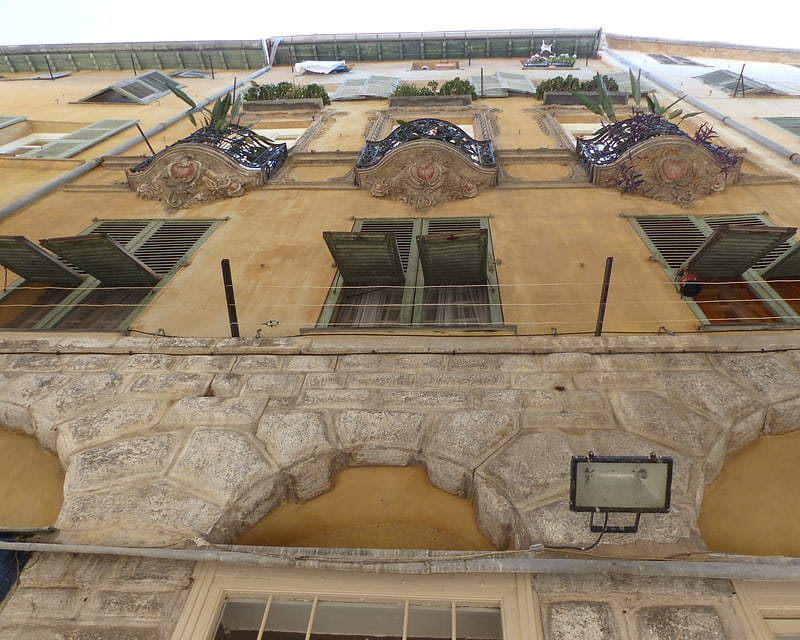
Museum in Nice, France. The Palais Lascaris is a seventeenth-century aristocratic building in Nice, France. Currently, it is a musical instrument museum. Located in the old town of Nice, it houses a collection of over 500 instruments, which makes it France’s second most important collection.[4]
Address: 15 Rue Droite, 06300 Nice (Vieille Ville)
Russian Orthodox Cathedral
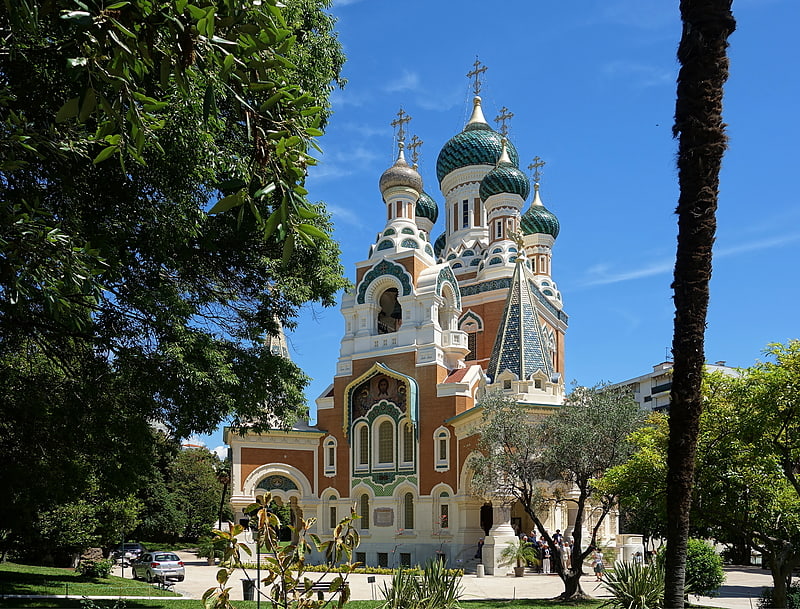
Also known as: Cathédrale Saint-Nicolas de Nice
19th-century Byzantine chapel and gardens. The St Nicholas Orthodox Cathedral, Nice is an Eastern Orthodox cathedral located in the French city of Nice. Property of the Russian Federation, it is recognized as a national monument of France, and it currently belongs to the jurisdiction of the Moscow Patriarchate. It is the largest Eastern Orthodox cathedral in Western Europe.
The cathedral was opened in 1912, thanks to the generosity of Russia's Tsar Nicholas II. From 1931 until 15 December 2011 (after a longstanding legal dispute over ownership was resolved), the parish that occupied the cathedral was part of the Paris-based Patriarchal Exarchate for Orthodox Parishes of Russian Tradition in Western Europe under the jurisdiction of the Church of Constantinople. After 2011, following a final ruling by France’s highest court, the Court of Cassation, the cathedral was declared to be property of the Russian state, and the congregation came under the jurisdiction of the Korsun diocese of the Russian Orthodox Church.[5]
Address: Avenue Nicolas II, 06000 Nice (Le Piol)
Musée international d'Art naïf Anatole Jakovsky
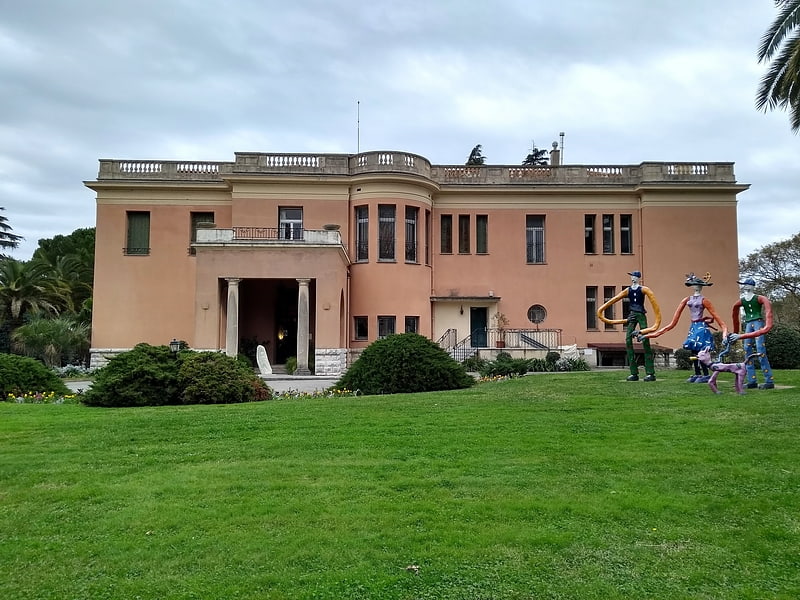
Also known as: Musée international d'art naïf Anatole Jakovsky
Museum in Nice, France. The Musée international d'Art naïf Anatole Jakovsky is a museum located in Nice, which displays 18-to-21st century works specialized in naive art. The museum was inaugurated on 5 March 1982.[6]
Address: avenue de Fabron, 06200 Nice (Fabron)
Parc Phoenix
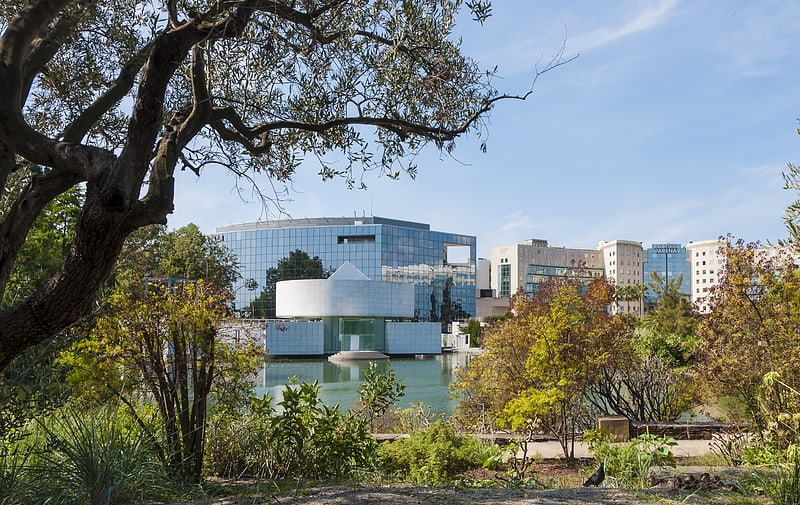
Also known as: Parc Phœnix
Botanic garden/zoo with huge glasshouse. Parc Phœnix is a 7-hectare botanical garden and zoo in Nice, Alpes-Maritimes, France.[7]
Address: 405 Promenade des Anglais, 06200 Nice
Castle of Nice
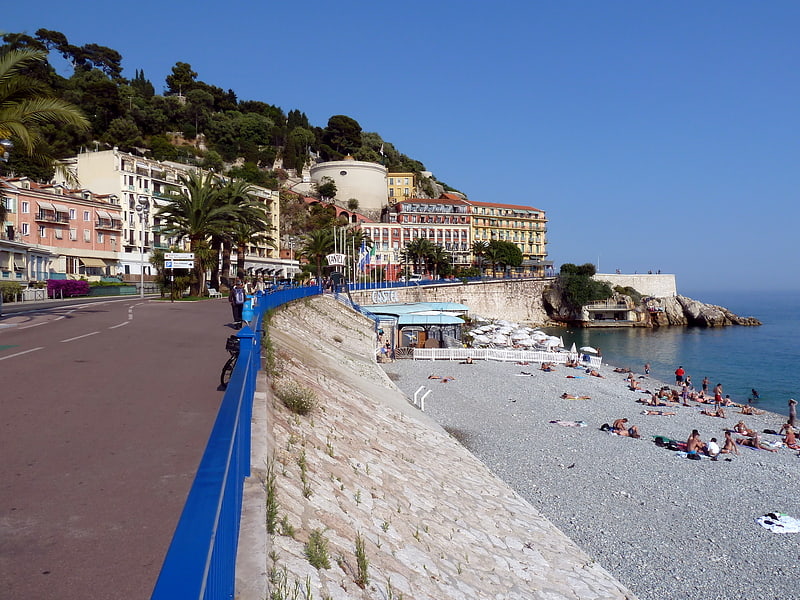
Also known as: Château de Nice
The Castle of Nice was a military citadel. Built at the top of a hill, it stood overlooking the bay of Nice from the 11th century to the 18th century. It was besieged several times, especially in 1543 and in 1691, before it was taken by French troops in 1705 and finally destroyed in 1706 by command of Louis XIV.
Nowadays, Castle Hill is used as a park. It's the most famous public garden in Nice, and a "must see" place for the numerous tourists who visit the city. It offers many amazing panoramas, and provides a beautiful view all day long from sunrise to sundown, highlighting various landscapes depending on where one looks: the Harbor at sunrise, the Promenade des Anglais at sundown. That's why Castle Hill is called "the cradle of the sun".[8]
Address: Montee du Chateau par ascenceur, 06300 Nice (Vieille Ville)
Cimiez
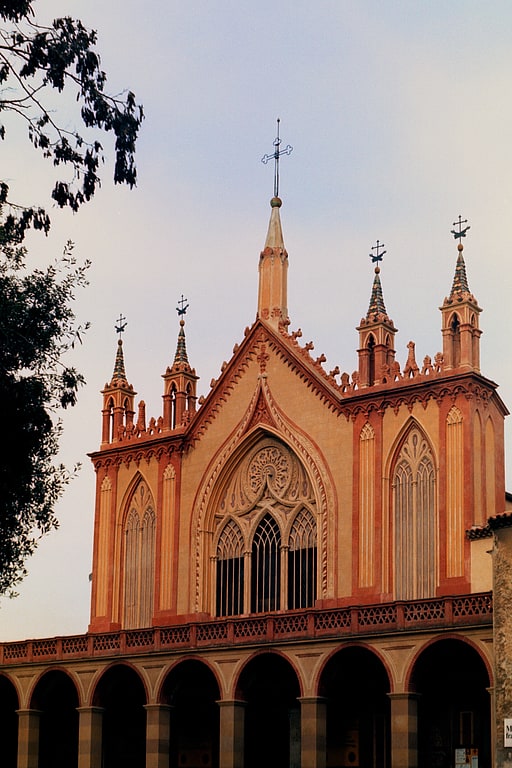
Neighborhood in Nice, France. Cimiez is an upper class neighborhood in Nice, southern France. The area contains the Musée Matisse and the ruins of Cemenelum, capital of the Ancient Roman province Alpes Maritimae on the Ligurian coast. Cemenelum was an important rival of Nice, continuing to exist as a separate city till the time of the Lombard invasions. The ruins include an arena, amphitheater, thermal baths, and paleochristian basilica.
During the Belle Epoque, Cimiez became a favourite holiday resort of European royalty: Victoria, Edward VII, George V, and Leopold II stayed in Cimiez.
Close to the ruins is the Excelsior Régina Palace where Queen Victoria spent part of her long visits to the French Riviera.
From 1974 to 2010, the Nice Jazz Festival was held on the grounds of the Roman Ruins in July each year (since 2011 the festival moved to the Place Masséna).
Also here can be found the Cimiez Monastery and church that have been used by the Franciscan friars since the 16th century. The church with a baroque altar from the seventeenth century and a marble cross from 1477 houses the paintings Pietà (triptych from 1475), Crucifixion (1512) and Deposition (1515) by the Italian medieval artist Ludovico Brea. On display are also more than 300 documents and works of art from the 15th to 18th centuries. Buried in the cemetery near the monastery are the painters Henri Matisse and Raoul Dufy, alongside the winner of the 1937 Nobel Prize for Literature, Roger Martin du Gard.
Cimiez contains an important Jewish population (around 20%).[9]
Address: 160 Avenue des Arènes de Cimiez, 06000 Nice (Rimiez)
Place Masséna
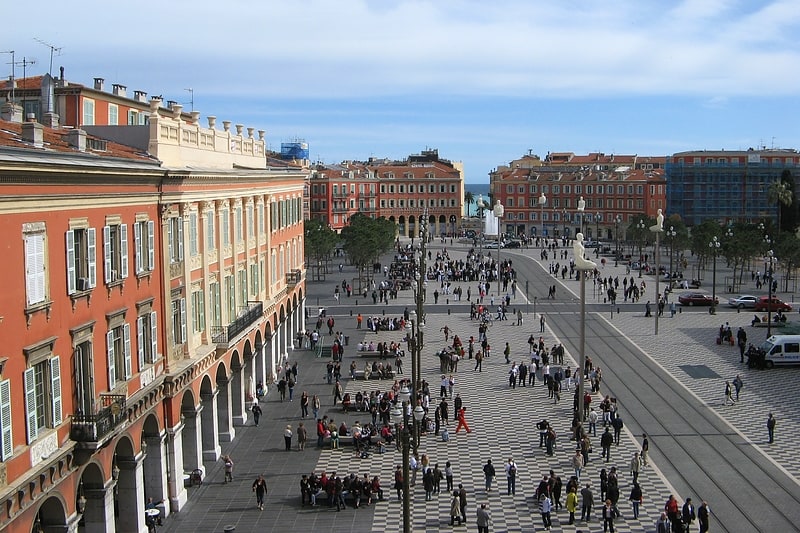
Hotel in Nice, France. The Place Masséna is a historic square in Nice, Alpes-Maritimes, France. It was named for André Masséna. Its layout was designed by Joseph Vernier in 1843-1844.
The Place Masséna is the main square of the city. Before the Paillon River was covered over, the Pont-Neuf was the only practicable way between the old town and the modern one. The square was thus divided into two parts (North and South) in 1824. With the demolition of the Masséna Casino in 1979, the Place Masséna became more spacious and less dense and is now bordered by red ochre buildings of Italian architecture.
The recent rebuilding of the tramline gave the square back to the pedestrians, restoring its status as a real Mediterranean square. It is lined with palm trees and stone pines, instead of being the rectangular roundabout of sorts it had become over the years. Since its construction, the Place Masséna has always been the spot for great public events. It is used for concerts, and particularly during the summer festivals, the Corso carnavalesque (carnival parade) in February, the military procession of 14 July (Bastille Day) or other traditional celebrations and banquets.
The Place Masséna is a two-minute walk from the Promenade des Anglais, old town, town centre, and Albert I Garden (Jardin Albert Ier). It is also a large crossroads between several of the main streets of the city: avenue Jean Médecin, avenue Félix Faure, boulevard Jean Jaurès, avenue de Verdun and rue Gioffredo.[10]
Address: Place Massena, 06000 Nice (Medecin)
Cimetière du Château
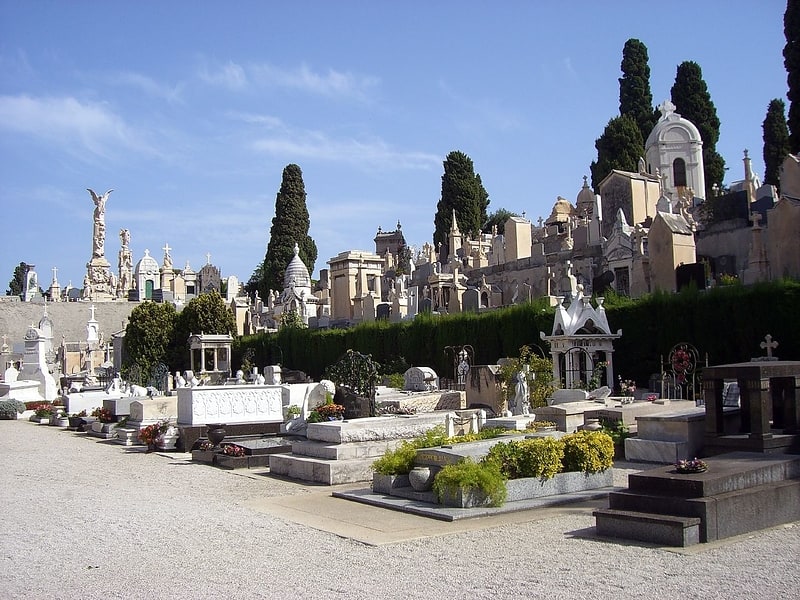
Cemetery in Nice, France. The Cimetière du Château in Nice, France, stands on the old citadel of Nice. Today, some sections of the massive walls of the ancient fortress remain. The fortress, which was built in the 16th century, was once one of the most secure strongholds in France. The cemetery itself was founded in 1783 and has 2,800 graves. It is as much popular for its function and history as for the scenic views of the city that affords.[11]
Address: Allée des Justes, Nice (Vieille Ville)
Nice Cathedral
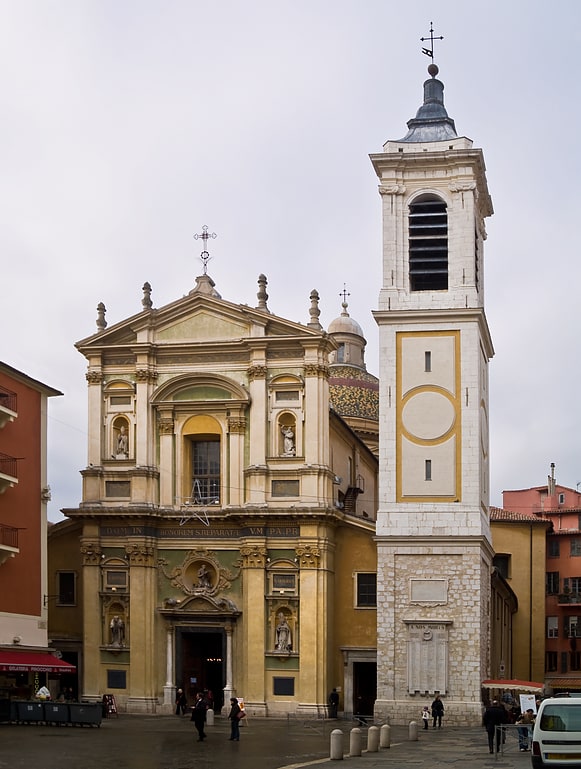
Also known as: Cathédrale Sainte-Réparate de Nice
17th-century cathedral with a bell tower. Nice Cathedral is a Catholic cathedral located in the city of Nice in southern France.
The cathedral is the seat of the Diocese of Nice. The construction of the main part of the current cathedral's body started in 1650 and finished in 1685. Further construction continued after its consecration in 1699, with new structures and decorative elements added to the cathedral until 1949. The cathedral is dedicated to the Assumption of the Virgin Mary and Saint Reparata. It has been classified as a national monument since 9 August 1906.[12]
Address: 3 Place Rossetti, 06300 Nice (Vieille Ville)
Nice Observatory
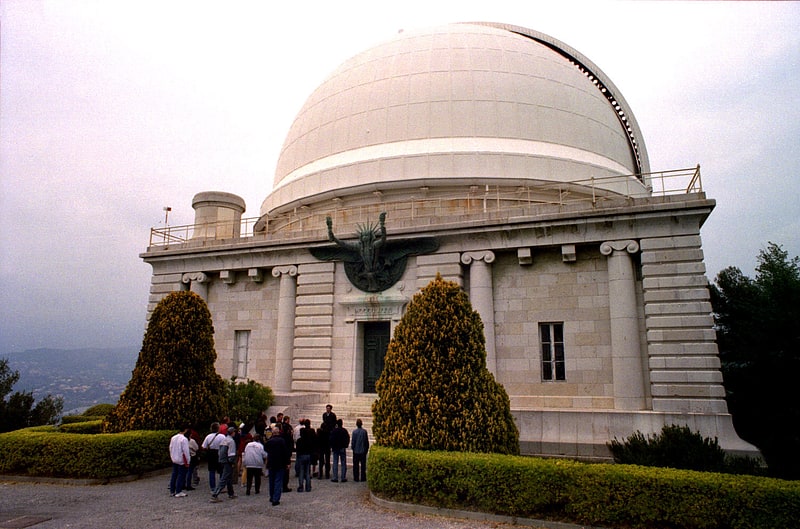
Also known as: Observatoire de Nice
Astronomical observatory. The Nice Observatory is an astronomical observatory located in Nice, France on the summit of Mount Gros. The observatory was founded in 1879, by the banker Raphaël Bischoffsheim. The architect was Charles Garnier, and Gustave Eiffel designed the main dome.
In 1886 the largest refracting (i.e. with an objective lens rather than a mirror) telescope in the World made its debut at Nice Observatory, the Grand Lunette.[13]
Address: 319 boulevard de l Observatoire, 06304 Nice
Church of Gesù
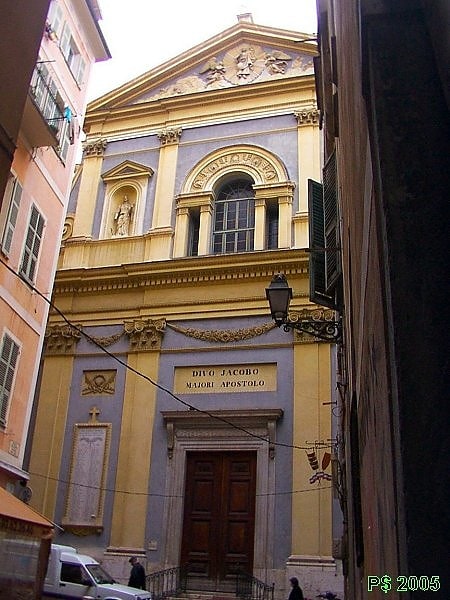
Also known as: Église Saint-Jacques-le-Majeur de Nice
Church in Nice, France. Church of the Gesù, Nice also known as The Church of Saint-Jacques-le-Majeur of Nice is a Roman Catholic church located on Rue Droite in the old town of Nice in the south of France. It is in the Baroque architectural tradition. The church became a parish in 1802 under the patronage of Jacques le Majeur.[14]
Address: 1 Rue du Jésus, 06300 Nice (Vieille Ville)
Musée des Beaux-Arts de Nice
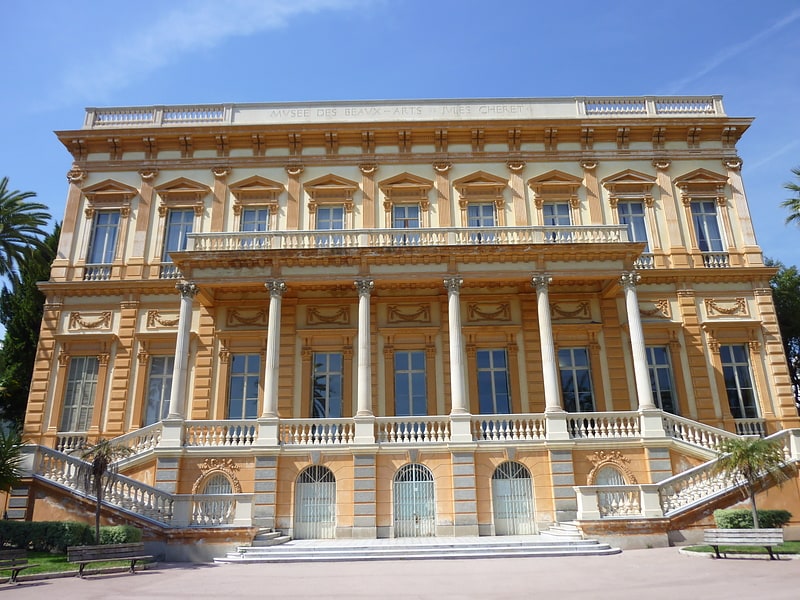
Also known as: Musée des beaux-arts de Nice
Art museum with works by Rodin and Sisley. The Musée des Beaux-Arts de Nice in Nice, France at 33 av. des Baumettes was built in the former private mansion built in 1878 by the Russian Princess, Elizaveta Vasilievna Kochubey. Named for the artist Jules Chéret who lived and worked in Nice during his final years, the museum opened as the "Palais des Arts Jules Chéret" on 7 January 1928.
The museum houses a collection of art spanning the past four centuries. There are paintings by Chéret and other artists who lived and worked on the French Riviera, such as Alexis Mossa, and his son Gustav-Adolf Mossa, who for many years were curators of the museum. The small museum has sculptures by Jean-Baptiste Carpeaux, François Rude, Michel de Tarnowsky and Auguste Rodin, plus ceramic pieces by Pablo Picasso. Some of the paintings are from:
- Marie Bashkirtseff
- Pierre Bonnard
- Jan Brueghel the Elder
- Bronzino
- Benjamin Constant
- Kees van Dongen
- Raoul Dufy
- Jean-Honoré Fragonard
- Marie Laurencin
- Luc-Olivier Merson
- Édouard Vuillard
Address: 33 avenue des Baumettes, 06000 Nice (Baumettes)
Port de la Darse
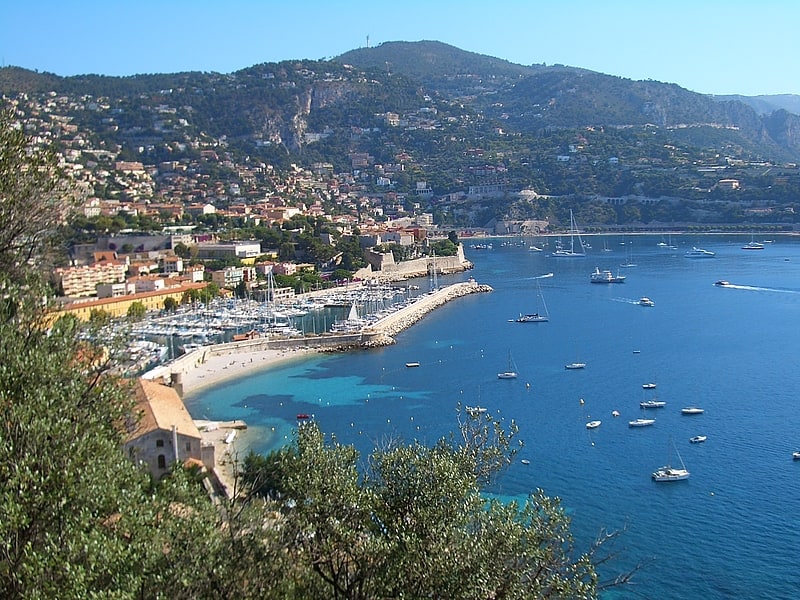
The dock of Villefranche-sur-Mer is the historical port of this city in the Alpes-Maritimes, on the French Riviera. It is the former arsenal of the Duchy of Savoy, which later became the Kingdom of Sardinia. The main buildings of the port are protected by the Monuments historiques since 1991.
Opéra de Nice
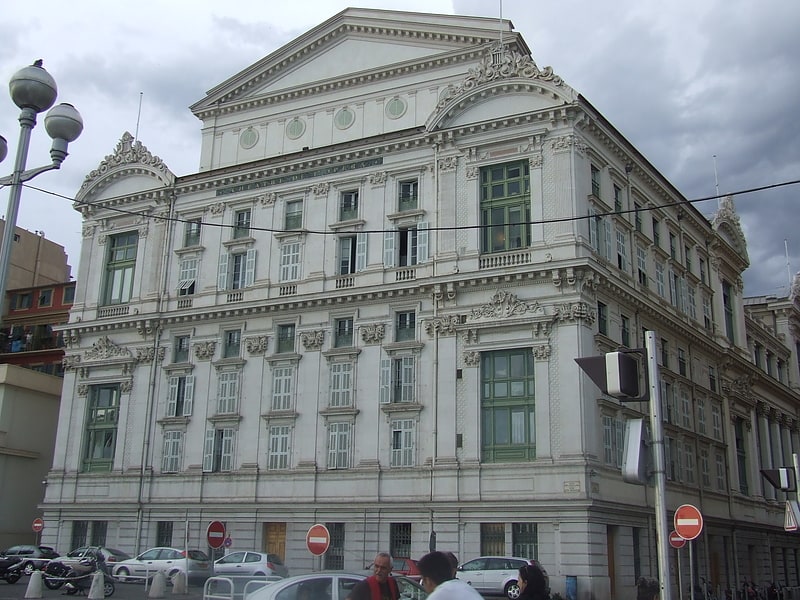
Opera house in Nice, France. The Opéra de Nice is the principal opera venue in Nice, France, which houses the Ballet Nice Méditerrannée and the Nice Philharmonic Orchestra. It offers three types of performances: operas, ballets and classical music concerts.[16]
Address: 4 rue Saint Francois de Paule, 06364 Nice (Vieille Ville)
Musée Matisse
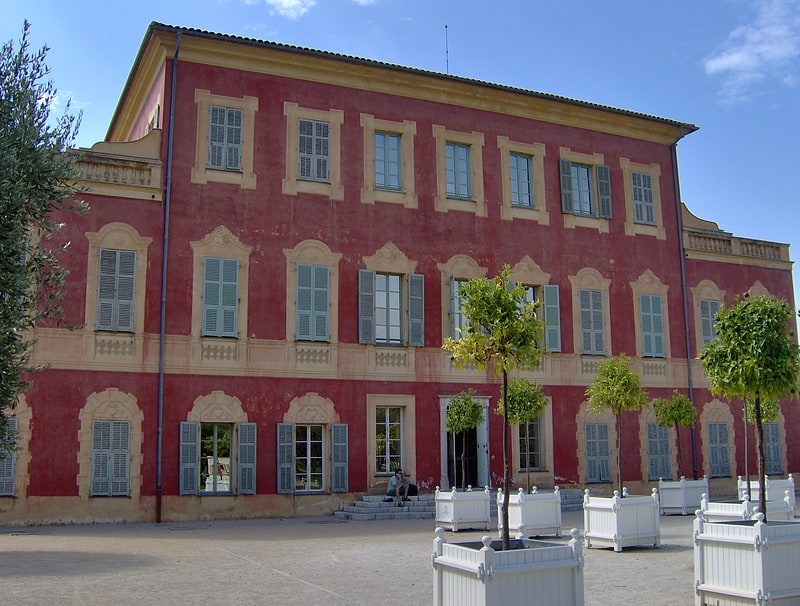
Large collection of Matisse artworks. The Musée Matisse in Nice is a municipal museum devoted to the work of French painter Henri Matisse. It gathers one of the world's largest collections of his works, tracing his artistic beginnings and his evolution through his last works. The museum, which opened in 1963, is located in the Villa des Arènes, a seventeenth-century villa in the neighborhood of Cimiez.[17]
Address: 164 Avenue des Arènes de Cimiez, 06000 Nice (Rimiez)
Palais Nikaia
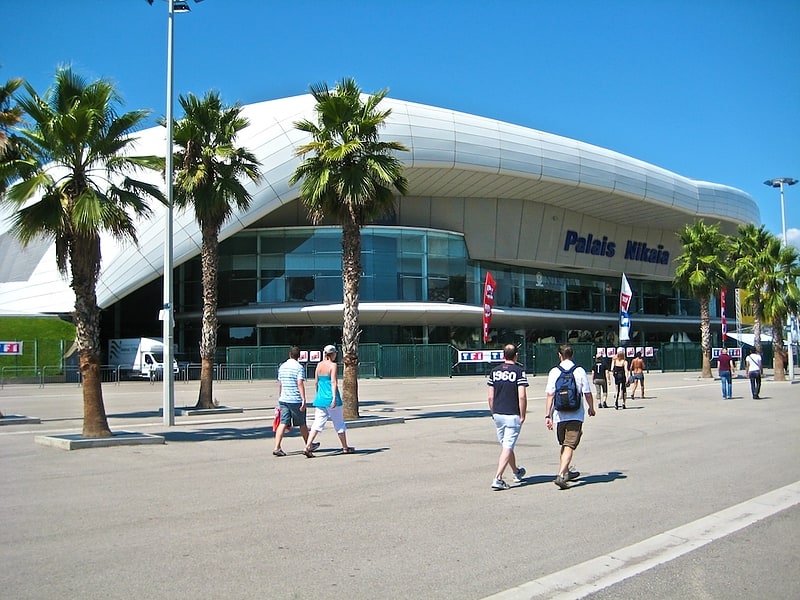
Also known as: Palais Nikaïa
Performing arts theater in Nice, France. Palais Nikaïa is an indoor concert hall and multi-purpose facility located in Nice, France. It opened on 4 April 2001, and is located five minutes' drive from Côte d'Azur International Airport.
On its own, Palais Nikaïa has seats for between 1,500 and 6,250 persons depending upon configuration, with an upwards maximum of 9,000 capacity including those standing. However, in a unique arrangement, it is located next to the outdoor Stade Charles-Ehrmann, with sliding glass doors to operate between them, and the two in combination can be used to host very large concerts with up to 50,000 or more in attendance.
Depeche Mode performed at the concert hall on May 4, 2013, during their Delta Machine Tour, in front of a sold-out crowd of 9,904 people.
In addition to concerts, Palais Nikaïa can host variety shows, sporting events, conventions.[18]
Address: Nice, 163 Blvd du Mercantour, 06200 Nice, France
Musée Marc Chagall
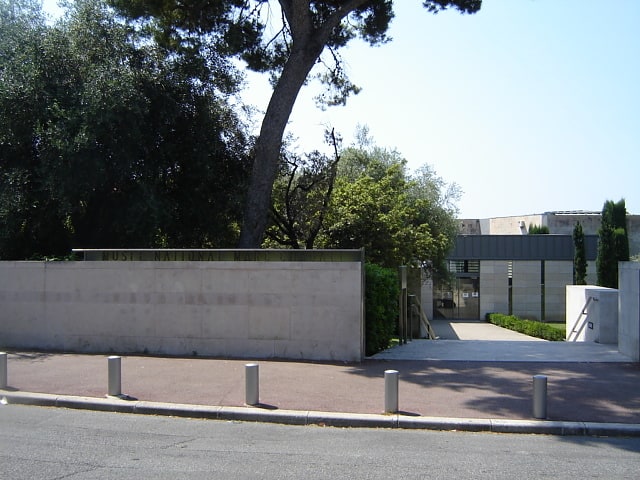
Also known as: Musée Marc-Chagall
Museum in Nice, France. The Marc Chagall National Museum is a French national museum dedicated to the work of painter Marc Chagall - essentially his works inspired by religion - located in Nice in the Alpes-Maritimes.[19]
Address: 36 Avenue Dr Ménard, 06000 Nice (Cimiez)
Muséum d'histoire naturelle de Nice

Museum in Nice, France. The Natural History Museum of Nice is a French natural-history museum located in Nice.[20]
Address: 60 boulevard Risso, 06300 Nice (Le Port)
Grotte du Lazaret
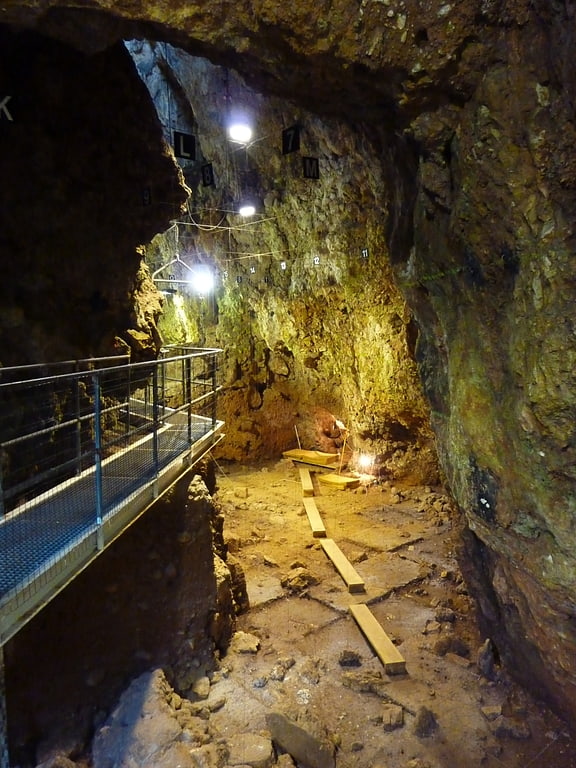
Famed cave known for prehistoric remains. The Grotte du Lazaret is an archaeological cave site of prehistoric human occupation study, situated in the eastern suburbs of the French town of Nice, overlooking the Mediterranean Sea. Results of excavations have been interpreted as to account for the construction of shelters by humans during the Lower Paleolithic period. Research teams have unearthed more than 20,000 fossilized faunal bone fragments.
Two hundred thousand year old cranial fragments of a nine year old juvenile found in the cave suggest the presence of either Homo heidelbergensis or a proto-Neanderthal human.[21]
Address: 33 B boulevard Franck Pilatte, 06300 Nice (Mont Boron)
Villa Arson
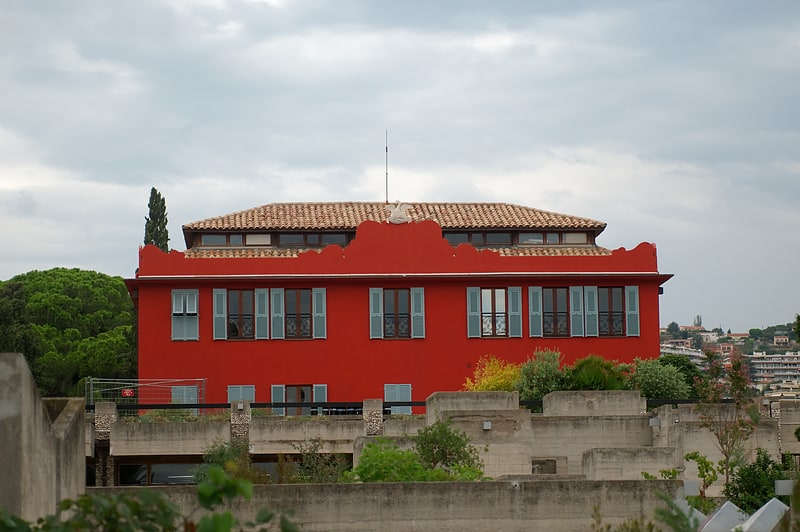
Villa in Nice, France. The Villa Arson, also referred to as the École Nationale Supérieure d'Arts à la Villa Arson, is a French art museum, elite school and research institution for contemporary art, located in Nice, France. It is home to the École Nationale Supérieure d'Arts de Nice and the Centre Nationale d'Art Contemporain, and was created under a ministerial charter in 1972 by the Ministry of Culture.[22]
Address: 20 Avenue Stephen Liegeard, 06100 Nice (Saint Sylvestre)
Notre-Dame de Nice
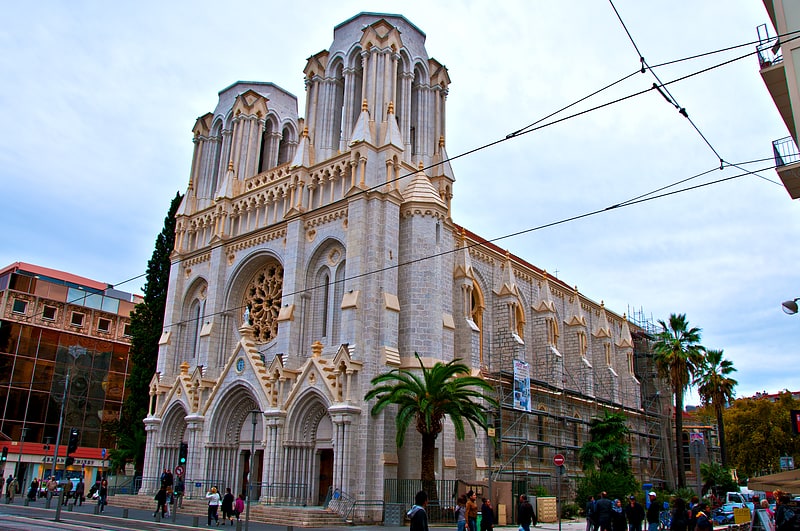
Towering Gothic 1860s cathedral. The Basilica of Notre-Dame de Nice is a Roman Catholic basilica situated on the Avenue Jean Médecin in the centre of Nice, in France. It is built in the Neo-Gothic architectural tradition.
The basilica, built between 1864 and 1868, was designed by Louis Lenormand and is the largest church in Nice, but is not the cathedral of the city.
Inspired by Angers Cathedral, it is built in the Gothic style. Its construction was motivated by a desire to add French architecture to the city following the acquisition of the County of Nice by France from the Kingdom of Sardinia; at the time Gothic buildings were considered to be characteristically French. Its most prominent features are two square towers 65 m high, which dominate the east front together with a large rose window featuring scenes of the Assumption of Mary.
On 29 October 2020, three people were killed at the church in an act of Islamic terrorism. The suspect was identified as a 21 year old Tunisian illegal immigrant, who had reportedly shouted "Allahu Akbar" while holding a Quran.[23]
Address: 28 Avenue Notre Dame, 06000 Nice (Medecin)
Sainte Jeanne d'Arc Church
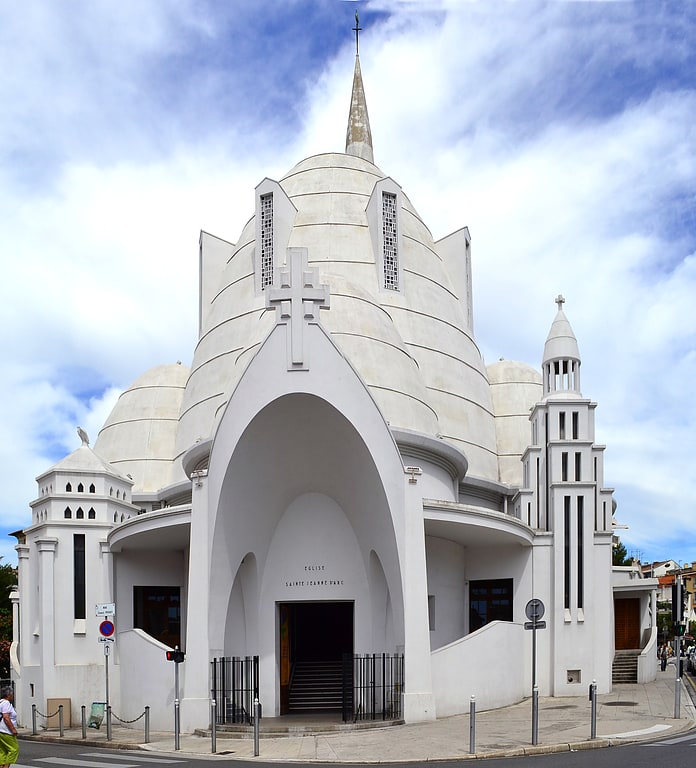
Also known as: Église Sainte-Jeanne-d'Arc de Nice
Catholic church in Nice, France. The Church of Saint Joan of Arc is a Roman Catholic parish church located in Nice, France. Noticeable for its original architecture, the church is dedicated to Joan of Arc.
The style of this church is controversial among the inhabitants of Nice, judged ugly by some. The church is sometime nicknamed "the Meringue" for its white color.[24]
Address: 86 Avenue Saint-Lambert, 06100 Nice (Liberation)
Neuf Lignes Obliques

Also known as: Neuf lignes obliques
Sculpture by Bernar Venet. Neuf lignes obliques is a steel monument on the Promenade des Anglais, by French artist Bernar Venet. It was commissioned to mark the 150th anniversary of the 1860 annexation of the County of Nice by France.
The sculpture is made of nine steel beams, 30 metres long, which meet at their top. As the name implies the beams are inclined at an oblique angle. The sculpture is made of 65 tonnes of corten steel, set on a 130 tonne concrete foundation.
Neuf lignes obliques is between the George Pompidou esplanade, a square on the south side of Vieux-Nice, and the Promenade des Anglais on Nice's Mediterranean coast.
The Mayor of Nice, Christian Estrosi, commissioned it to symbolise the nine valleys of the old County of Nice as well as the surrounding mountains pointing to the sea. The sculpture was inaugurated on 31 May 2010 and moved 10m to its current site in 2012.[25]
Address: Quai des États Unis, 06000 Nice (Vieille Ville)
Villa Paradiso
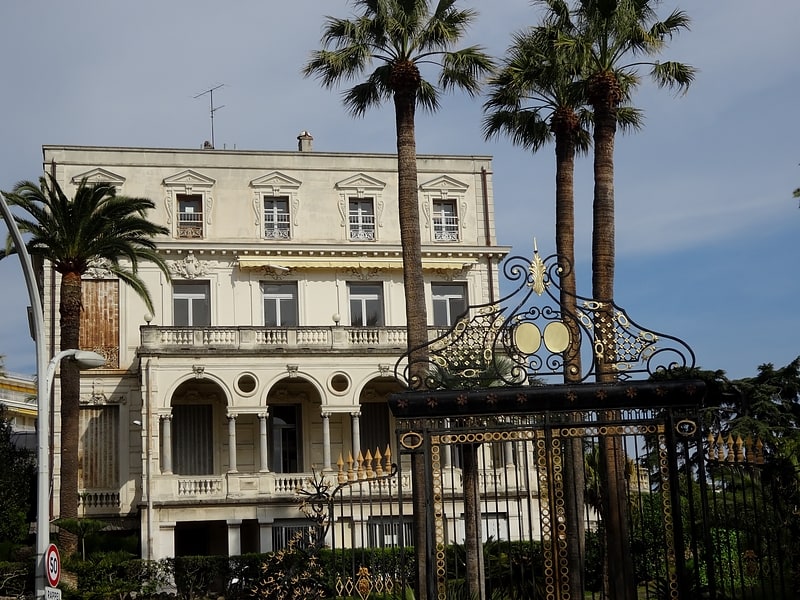
Villa in Nice, France. The Villa Paradiso is a large villa in Nice, France built at the start of the 20th century by the architect Constantin Scala. During World War II it was used by the Académie française for its Prix de Rome scholars. The villa continues to be used for cultural purposes.[26]
Address: Nice, 24 Boulevard de Cimiez
Villefranche-sur-Mer
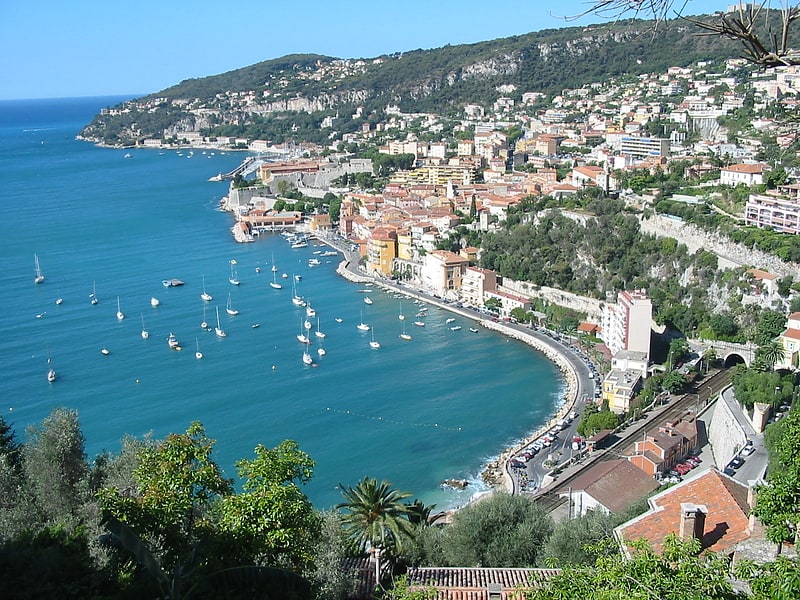
Commune in France. Villefranche-sur-Mer is a commune in the Alpes-Maritimes department in the Provence-Alpes-Côte d'Azur region on the French Riviera and is located south-west of the Principality of Monaco, which is just west of the French-Italian border.[27]
Jardin botanique de Nice
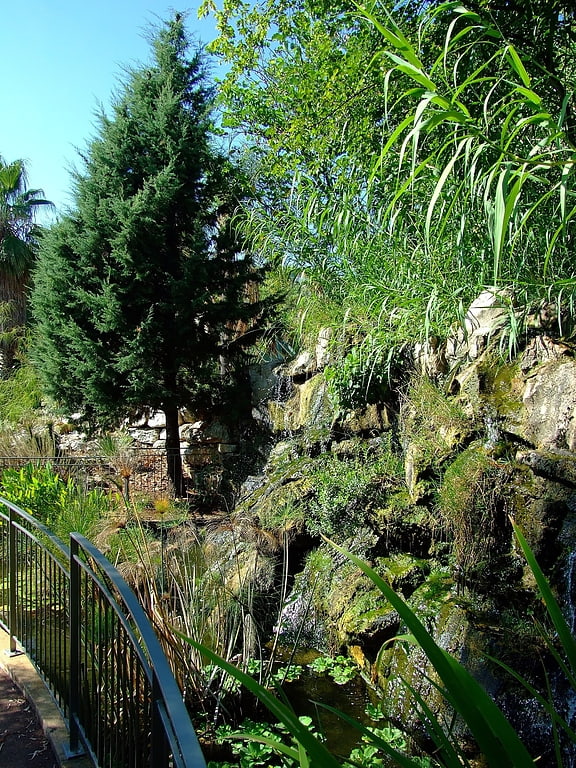
Also known as: Jardin botanique de la ville de Nice
Storied garden with Mediterranean plants. The Jardin botanique de la Ville de Nice, also known as the Jardin botanique de Nice, is a municipal botanical garden located at 78 avenue de la Corniche Fleurie, Nice, Alpes-Maritimes, Provence-Alpes-Côte d'Azur, France. It is open daily without charge.[28]
Address: 78 Avenue Corniche Fleurie, 06200 Nice (Caucade)
Nice Synagogue
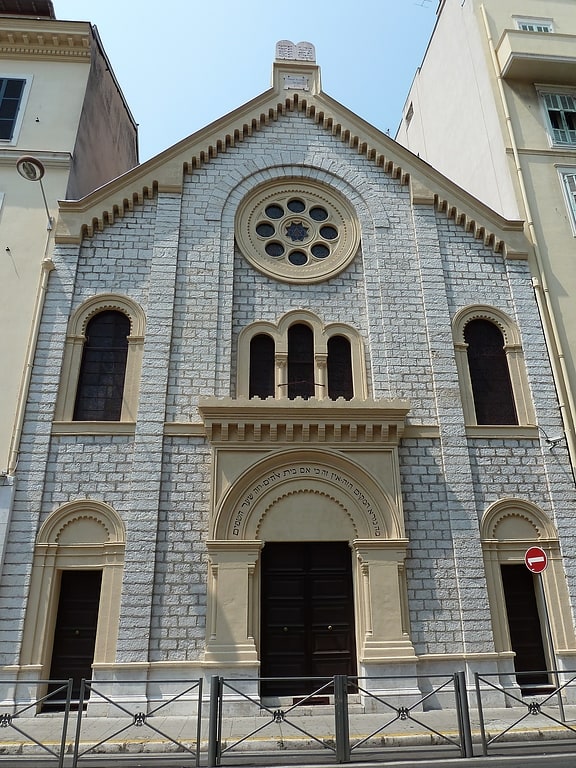
Also known as: Synagogue de Nice
Synagogue in Nice, France. The Nice Synagogue is a historic synagogue in Nice, Alpes-Maritimes, France. It was built in 1885, and dedicated in 1886. It has been listed as an official national monument since April 17, 2004.[29]
Cimiez Cathedral

Also known as: Cathédrale Sainte-Marie de Cimiez
Church. Cimiez Cathedral was a Roman Catholic church in the southern town of Nice, France. The cathedral sat on the hill of the Château de Nice, a castle overlooking the city. The bishop's seat was transferred to the present Nice Cathedral in 1590. After incurring damage in the Siege of Nice in 1691, the former cathedral was demolished in 1706.[30]
Villa Leopolda

Villa in Villefranche-sur-Mer, France. The Villa La Leopolda is a large detached villa in Villefranche-sur-Mer, in the Alpes-Maritimes department on the French Riviera. The villa is situated in 18 acres of grounds. The villa has had several notable owners including Gianni and Marella Agnelli, Izaak and Dorothy J. Killam, and, since 1987, by Edmond and Lily Safra, who inherited the villa after her husband's death.[31]
Address: 1342-1744 Avenue Léopold II, 06230 Villefranche-sur-Mer
Albert I Garden

The Albert-Ier garden is one of the oldest public gardens in Nice.
It is enclosed in a perimeter formed by the Avenue des Phocéens, the Place Masséna, the Avenue de Verdun and the Promenade des Anglais. As it expanded, it was successively named the Paradiso Garden, the Jardin des Plantes, the Masséna Garden, the Palm Garden and, in 1914, the Albert Ier Garden, King of the Belgians, in honor of his courageous stand against Germany.
Falicon pyramid

Also known as: Pyramide de Falicon et grotte de Ratapignata
Pyramid in Falicon, France. The Falicon pyramid is a monument located at a rural site near the town of Falicon, on the French Riviera, near Nice.
It is constructed above a karstic cave known as the "Cave of the Bats" (Occitan: Bauma des Ratapignata) and is one of the few pyramids in Europe. The pyramid is constructed of small, irregularly shaped stones, possesses a fairly acute angle of inclination, and is in a partly ruined condition. While most of its upper section is missing, the lower section is reasonably well preserved.
The pyramid's purpose and exact origins are unknown. Though it had been suggested that it may have been constructed by Roman legionaries involved in Egyptian cult practices, more recent research indicated that it was actually built between 1803 and 1812, i.e. during the rule of Napoleon Bonaparte after the 1798-1801 French campaign in Egypt and Syria.[32]
Villa Beau Site
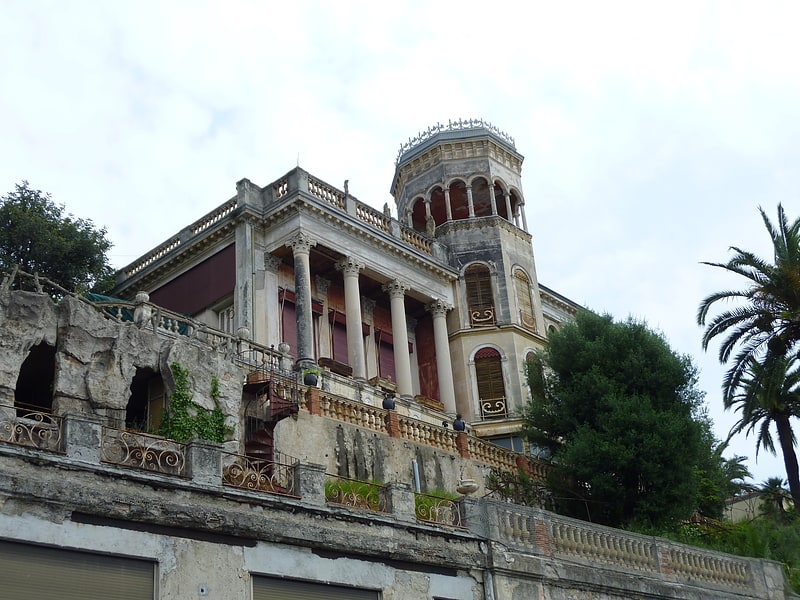
Mansion in Nice, France. Villa Beau Site is a historic mansion in Nice, Alpes-Maritimes, France. It was built from 1885 to 1890, and it was designed by architect Sébastien-Marcel Biasini. It has been listed as an official national monument since July 27, 1987.[33]